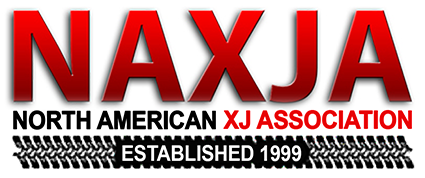montanaman
NAXJA Forum User
- Location
- Western Montana
'91 XJ
I'm changing the pinion seal on my '91 High-Pinion D30.
The tag has the following numbers:
52068047
3.07 610318-5
The '91 Factory Service Manual says to first measure pinion bearing preload with an inch-pound torque wrench *before* removing the pinion nut. Then, when replacing the pinion nut, retorque it to 5 inches over the first measurement.
The problem is, I took the shaft off, and put a little beam-style in-lb torque wrench on the pinion nut, and it's not measuring any preload at all ... maybe 1 or 2 in-lbs. The axles are removed, but the carrier and ring are still in. Also, when I grab the yoke and wiggle it, it seems to have a touch of end-play. Not much, but enough to feel it and hear it a little. The turning feels smooth through the complete turn.
I haven't removed the pinion nut yet, because I want to make sure I know what I'm doing first.
So ... some questions:
1.) - Does anyone know if this is a crush sleeve or shims? The '91 FSM says shims, but it's been wrong before (it only covers pre-Denso alternators, which were discontinued after 1990).
2.) - If it is shims, does anybody have a part number for the preload shims? I can't find them on rock auto, napa, oreilly's, autozone. I can only find a complete shim kit, which costs about $50. That's a lot to spend when I only need a few little shims to set the pinion preload.
3.) - If it is shims, do I just remove the outer bearing, then add shims or is there something else that needs to be removed before adding the shims? I want to make sure I get the order right.
4.) - FSM says to set preload to 10-20 inch-pounds when reusing old bearings. Is that preload measurement with carrier installed or out?
5.) - Is it possible to convert a shimmed D30 to a crush sleeve for pinion bearing preload? Crush sleeves cost 4 effing dollars, not 50, and they are easy to get, and I know exactly what to do with them.
Thanks in advance for any help/advice you can provide. I'm kind of pissed off. This is supposed to be a "Simple" job, and I want to get it done.
I'm changing the pinion seal on my '91 High-Pinion D30.
The tag has the following numbers:
52068047
3.07 610318-5
The '91 Factory Service Manual says to first measure pinion bearing preload with an inch-pound torque wrench *before* removing the pinion nut. Then, when replacing the pinion nut, retorque it to 5 inches over the first measurement.
The problem is, I took the shaft off, and put a little beam-style in-lb torque wrench on the pinion nut, and it's not measuring any preload at all ... maybe 1 or 2 in-lbs. The axles are removed, but the carrier and ring are still in. Also, when I grab the yoke and wiggle it, it seems to have a touch of end-play. Not much, but enough to feel it and hear it a little. The turning feels smooth through the complete turn.
I haven't removed the pinion nut yet, because I want to make sure I know what I'm doing first.
So ... some questions:
1.) - Does anyone know if this is a crush sleeve or shims? The '91 FSM says shims, but it's been wrong before (it only covers pre-Denso alternators, which were discontinued after 1990).
2.) - If it is shims, does anybody have a part number for the preload shims? I can't find them on rock auto, napa, oreilly's, autozone. I can only find a complete shim kit, which costs about $50. That's a lot to spend when I only need a few little shims to set the pinion preload.
3.) - If it is shims, do I just remove the outer bearing, then add shims or is there something else that needs to be removed before adding the shims? I want to make sure I get the order right.
4.) - FSM says to set preload to 10-20 inch-pounds when reusing old bearings. Is that preload measurement with carrier installed or out?
5.) - Is it possible to convert a shimmed D30 to a crush sleeve for pinion bearing preload? Crush sleeves cost 4 effing dollars, not 50, and they are easy to get, and I know exactly what to do with them.
Thanks in advance for any help/advice you can provide. I'm kind of pissed off. This is supposed to be a "Simple" job, and I want to get it done.
Last edited:
